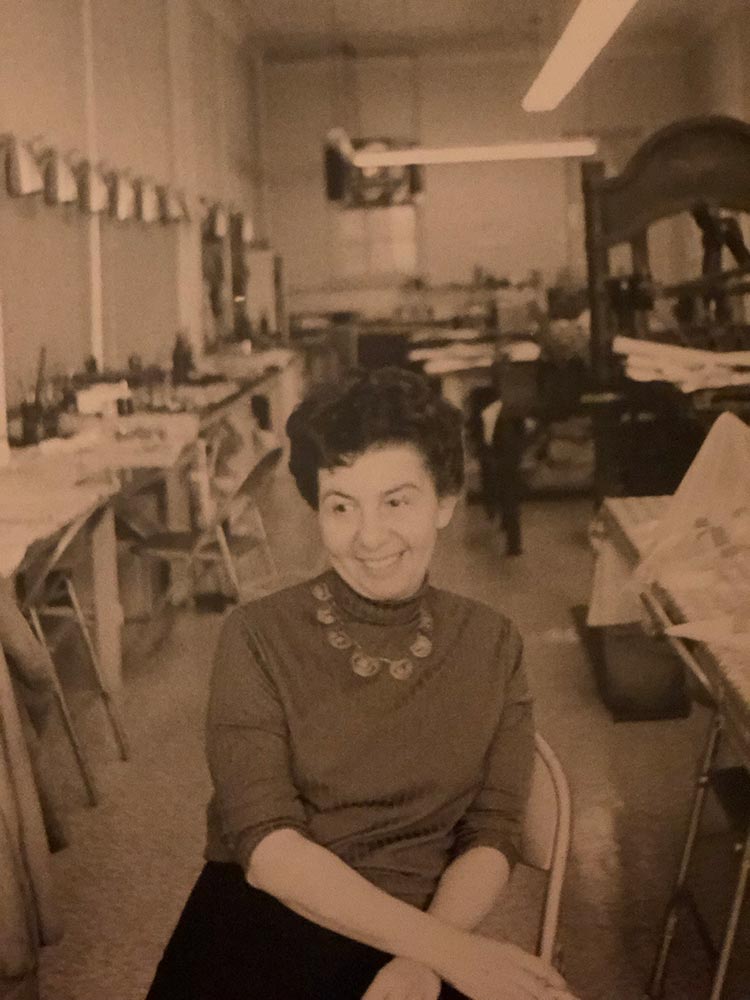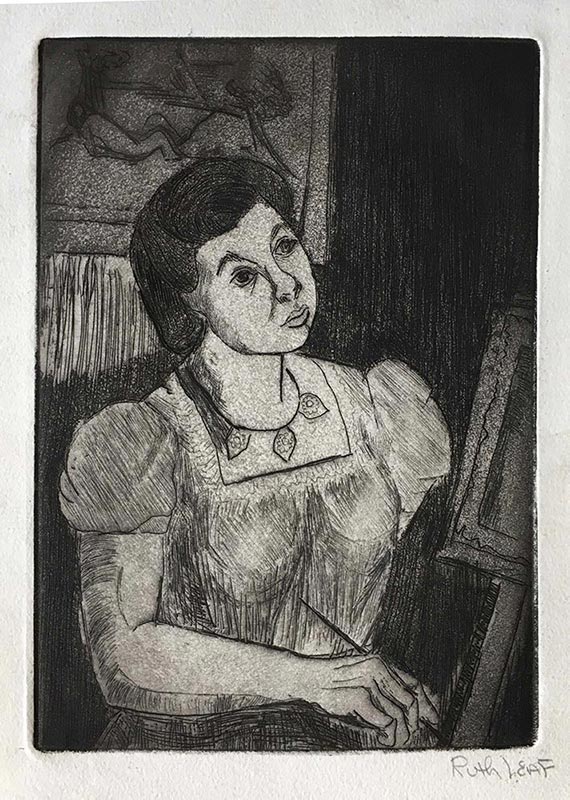50. Ruth Leaf
| Life Dates | 1923-2015 |
| Place of Birth | Brighton Beach, NY, USA |
| Place of Death | Venice, CA, USA |
| Birth Name | Ruth Leaf |
Ruth Leaf was born and raised in Brighton Beach, New York. At nineteen, she enrolled in classes at the Art Students League, a decision her parents—both immigrants from Russia—had mixed feelings about, given the profession’s economic challenges. At the League, she honed her practice in the graphic arts by studying with Harry Sternberg, for whom she served as a studio monitor.1 In the early 1940s Leaf married Hersch Lerner; Sternberg was unsupportive of Leaf’s decision to start a family (the couple had two daughters born in 1943 and 1947). Given Sternberg’s attitude, she decided to pursue further studies in printmaking elsewhere and became a member of Atelier 17 around 1945–46. She worked during the day while her mother watched her young daughter, later recalling that the studio was a bustling hub of activity and reporting that she learned a tremendous amount through both direct instruction from Hayter and collaboration with others.2 She showed with Atelier 17 twice at the Leicester Galleries (1947) and Laurel Gallery (1949) and exhibited in other national print competitions. During the 1950s her prints were expressionistic woodcuts that featured jazz musicians—she frequented the city’s jazz clubs—and the amusement parks and beaches of Coney Island, near where she had grown up.3 In the late 1960s she founded the Ruth Leaf Studio in Douglaston, Queens, which she operated until the 1990s. Classes were structured around three primary exercises: aquatint, soft ground etching, and color viscosity printing, which Hayter had been developing during Leaf’s time at Atelier 17 (in fact, Leaf’s students called their viscosity prints “Hayters”). Success in a student’s first plate was key to Leaf’s approach, and she made sure to instruct about even the smallest details, such as the necessity of removing grease from the plate surface before applying grounds, as reflected in her comprehensive 1976 printmaking manual.4^68^ Leaf practiced printmaking well into her eighties, even after her relocation to Venice, California, and reserved several hours per day for studio time. Her prints from the 2000s were mostly abstract and vibrantly colored.
Selected Bibliography
Leaf, Ruth. Intaglio Printmaking Techniques. New York: Watson-Guptill, 1976.
“New Co-Op Gallery Opens.” New York Times, November 17, 1974.


